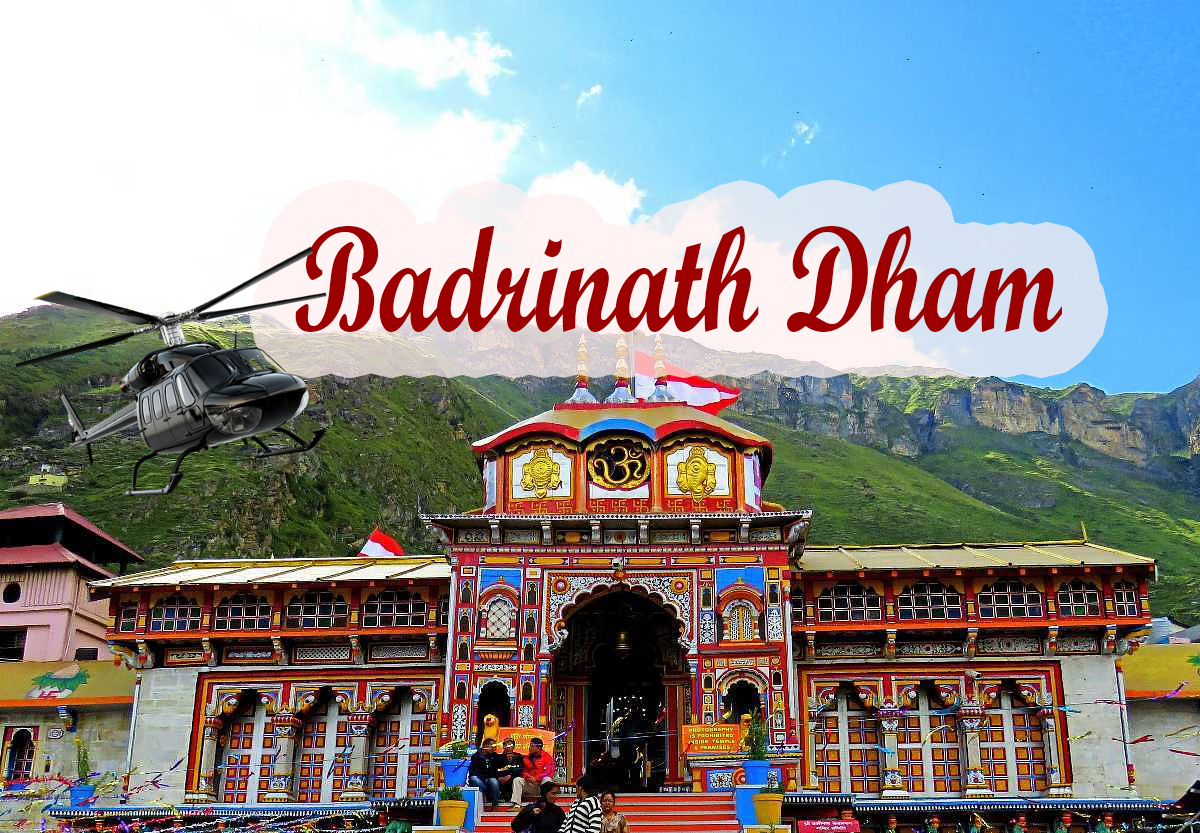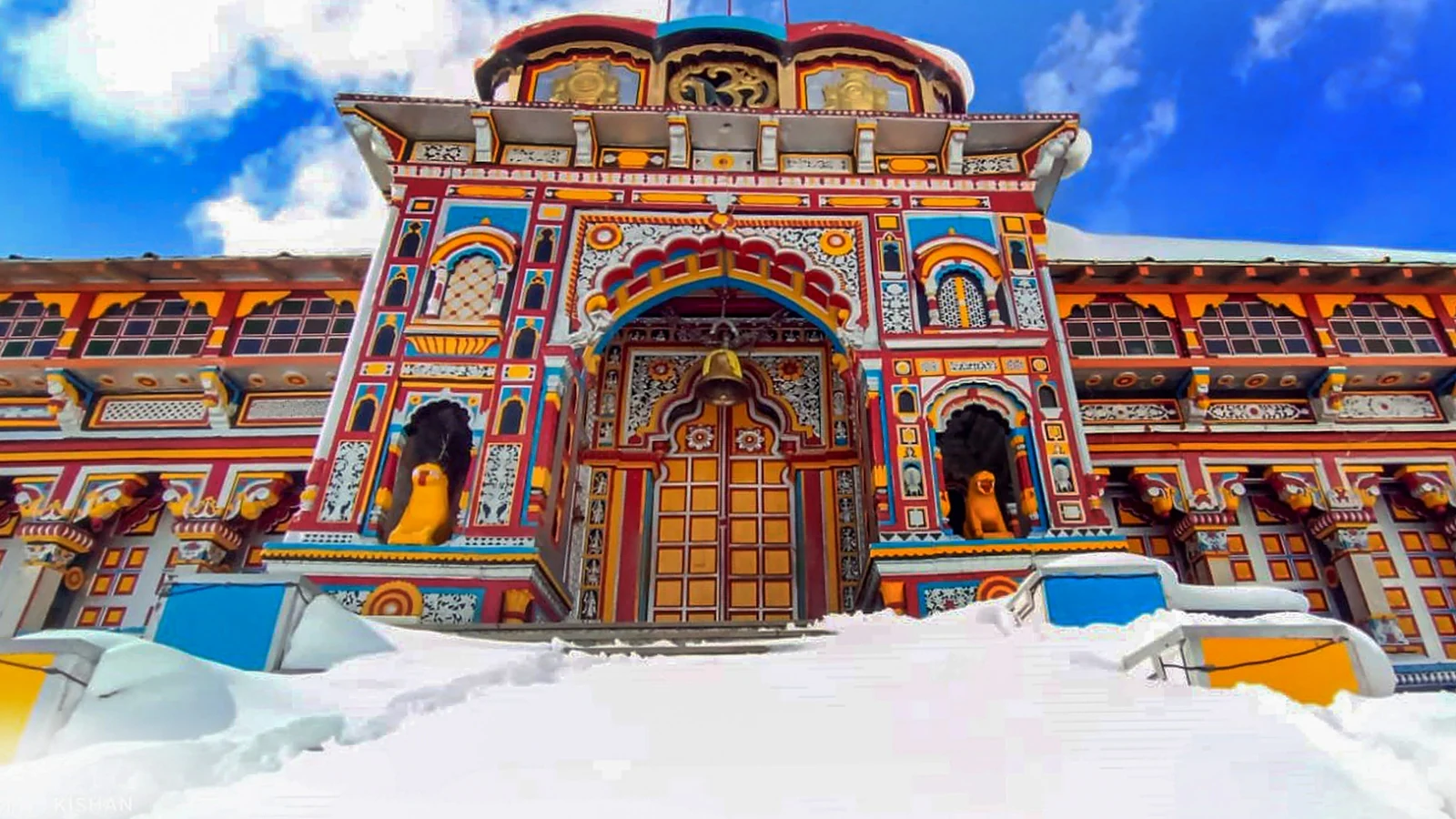 Badrinath
Badrinath
 About
About

04 May 2025 to 06 Nov 2025 (Tentative)

The Badrinath Temple and Surrounded Sacred Sites
Mostly consisting of the well-known Badrinath Temple, a spiritual magnet attracting millions of people, Badrinath is The temple is a single fusion of spiritual force and Garhwali architecture with its elegant façade, gold-plated dome, and complex woodwork. Rising on a lotus pedestal in a yogic stance, the sanctum holds the renowned black Shaligram stone monument of Lord Badrinarayan. Said to be over a thousand years old, Adi Shankaracharya built this memorial here in the ninth century after Narad Kund recovered from the Alaknanda. Opening each year on Akshaya Tritiya (April/May), the temple closes on Bhai Dooj (October/November), with the deity's dedication continuing on over the winter at Joshimath. Tapt Kund, a naturally occurring hot water spring declared holy, lies just below the temple. Before visiting the shrine, pilgrims wash here since the waters are considered to have healing and purifying effects. Furthermore, adding to its spiritual importance is Narad Kund, the actual pool from which the idol of the deity was discovered. A little walk away is Brahmkapal, a level platform by the river where devotees conduct shraddha ceremonies for their ancestors; it is thought that completing these rites here offers moksha, or freedom, to departed souls. Rising higher brings Charan Paduka, a rock bearing a footprint thought to be of Lord Vishnu personally—a symbolic spot where pilgrims bow to seek his blessings. Another well-known site is Sheshnetra, where the naturally occurring rock formation resembles the eye of Sheshnag, the celestial snake Lord Vishnu sleeps on. Taken together, these holy locations form a tremendously spiritual orbit around the temple, therefore augmenting the pilgrim's emotional and religious path. Every action performed here connects with chants, bells, and the river's movement, therefore transforming every visit into an amazing and humble experience.
Mana Village and Legendary Roads
Officially called the last village in India close to the Indo-Tibetan border, Mana Village is around three miles from Badrinath. On the Badrinath calendar, Mana—deeply ingrained in mythology, cultural appeal, and natural beauty—is a must-see. This quiet hamlet, known as the Swargarohini Yatra, is believed to have served as the penultimate halt for the Pandavas on their journey to heaven. One is transported in time by walking amid its classic wooden houses and stone-paved roads. Particularly amazing here is Bheem Pul, a large rock slab naturally across the Saraswati River. Legend has it that Bhima put this boulder so Draupadi could cross the river on the path to paradise. Here, the Saraswati River itself presents a singular and magnificent panorama before vanishing underneath. Close by is Vyas Gufa, where recounted in the nearby Ganesh Gufa, Sage Vyas is claimed to have written the Mahabharata with Lord Ganesha's help. Little shrines and legendary artwork subtly tell magnificent stories inside these caves. Attached to stories of the tapasya of knowledge Narayan, the Urvashi Temple honours the celestial nymph Urvashi. Mana has a rare mix of sanctity and culture with its serene settings, spiritual relevance, and pure natural environment. Mana, with its flowing rivers, holy rocks, and ancient caves, whispers stories that are as old as time itself.
Lakes, mountains, panch dharas, and waterfalls are among the natural wonders in Mana.
The magnificent natural surroundings of Badrinath—which include tranquil alpine lakes, dazzling glaciers, roaring waterfalls, and high mountain peaks—clearly entwine the spiritual attractiveness of the temple. Among the most breathtaking natural wonders are Vasudhara Falls, a 400-foot-high waterfall some km from Mana Village. The waterfall should show only its full flow in the pure heart. Hikers and pilgrims enjoy the short walk to Vasudhara, which is moderately difficult, due to its panoramic views of the surrounding mountains and valleys. Among them, not least is Satopanth Tal, a 4,600-metre glacial lake fashioned like a triangle. Legends have claimed that the divine trinity—Brahma, Vishnu, and Shiva—are continually meditating at this quiet lake. Although the journey to Satopanth is regarded as one of the most spiritually fulfilling experiences in the area, it is difficult and suitable only for experienced hikers. Vasuki Tal, an alpine lake encircled by snow-capped mountains and serene calm, is another secret treasure for those seeking tranquillity. Apart from the popular sites, Badrinath has the Panch Dharas, five holy streams: Prahlad, Kurma, Bhrigu, Indira, and Urvashi Dharas. From glacial melts, these glittering clear streams run across stony ground before flowing into the Alaknanda River. Named for sages and ancient gods, every Dhara has a legendary meaning. Rivers also link revered Hinduism personalities with the Panch Shilas—sacred stones including Narad Shila, Barah Shila, Garud Shila, Narsingh Shila, and Markandeya Shila. Not only are these stones rocks, but they are also beloved living symbols of faith and commitment. Badrinath's natural beauty enhances its spiritual effect and provides not just peace but also a reminder of the enormous link between divinity and environment.
Temperature, Accessibility, and Travel Basics
The temperature of Badrinath greatly affects both its season and spiritual rhythm. Because of its enormous height, the area is absolutely inaccessible between November and April; severe winters with tonnes of snowfall cause damage. The temple doors close near Bhai Dooj, transporting the deity of Lord Badrinarayan to Joshimath, where rites persist until spring. The ideal season to visit is between May and October, when the roads are clear, the skies are blue, and the area has optimum spiritual vitality. The summer temperatures between 7°C and 18°C provide appropriate conditions for walkers and pilgrims. We urge visitors to make arrangements and monitor weather forecasts, even though the monsoon months of July through early September bring continuous rain and even landslides. Access-wise, the closest airport is Jolly Grant Airport in Dehradun, approximately 315 miles from Badrinath. Rishikesh is about 295 kilometres away; it is the closest train station. From both venues, visitors might take shared cabs, private vehicles, or well-connected bus lines. The road from Joshimath to Badrinath, especially the last 45-kilometre section, provides breathtaking vistas of mountain streams, steep gorges, and evergreen trees; although it is long and winding, it is really satisfying. Every component of the trip builds up to a religious, emotional, and transforming experience from the confluences of holy rivers on route to the last view of the temple. Ultimately, a journey into India's holiest centre transforms faith from a spiritual checkpoint or tourist attraction into a physical experience, as the rush of Himalayan rivers combines with the echoes of mantras. Long after the visitor gets back home, this elegant mix of dedication, learning, and divine connection will remain.
| Badrinath Opening Date of 2026 | Badrinath Closing Date of 2026 |
|---|---|
| 04 May 2025 | 06 Nov 2025 (Tentative) |
| Badrinath Facts | |
|---|---|
| Area | 3 sq kms |
| Altitude | 3133 mts |
| District | Chamoli |
| State | Uttrakhand |
| Season | April to November |
| Famous for | Pilgrimage, Temple |
| Pincode | 246422 |
| STD Code | 01381 |
